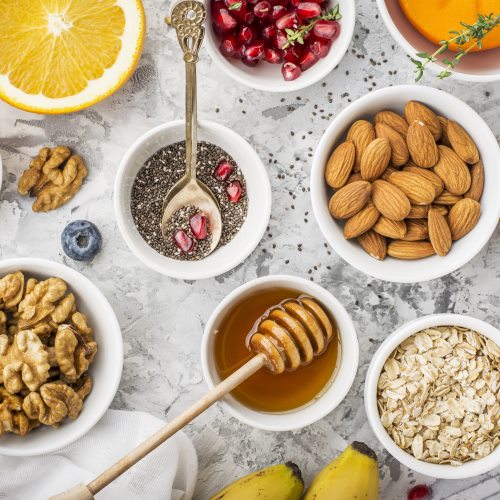Synthetic or natural? Which vitamins to choose?
From a very early age children are told about the importance of vitamins. While adults go to no end of trouble to encourage their offspring to reach for fruit and vegetables, they do not set an example for their children to follow. Instead of eating such foods themselves, they would rather go to the nearest pharmacy and buy vitamin preparations. Why eating artificial vitamins does more harm than good.
What are vitamins?
Vitamins are organic chemical compounds with a diversified structure, which the body needs to function properly. They are not typical nutrients, as they play an important regulatory role. The term “vitamins” was first used in 1912 by Kazimierz Funk, a Polish biochemist, who was the first to isolate a water-soluble chemical compound that prevented beriberi. Vitamins are delivered to the body with food, although some of them the organism produces on its own. Vitamins are produced by plants during photosynthesis, under the influence of sunlight. The deficiency of a particular vitamin is called hypovitaminosis, while a total lack is referred to as – avitominosis. The condition of abnormally high (toxic) storage level of a vitamin is known as – hypervitaminosis.
When are vitamins best absorbed?
The vitamins found in plants have the form of provitamins, i.e. chemical compounds that are easily absorbed by humans. Their absorbability depends primarily on the presence of proteins in the plants, and improves owing to the presence of mineral salts. Synthetic vitamins are usually inorganic (crystalline). If deprived of the protein carrier, they cannot be absorbed by the body. It is not what you eat, but what you absorb, that counts.
Synthetic vitamins, a toxic ballast for the body
That the body does not absorb synthetic vitamins or absorbs them poorly does not mean that they do not affect it at all. In fact, synthetic vitamins burden the liver and kidneys. As crystalline substances, inorganic and devoid of other natural elements and ingredients, synthetic vitamins are recognised by the body as foreign substances. While natural vitamins, delivered with food, cannot be overdosed, this is not true for synthetics. Hence the information on the potential adverse reactions to overdosing on the packaging. Those who take too many artificial vitamins often suffer from gastric and duodenal ulcers and inflammations and have a higher appetite, as the body needs more nutrients to absorb synthetic vitamins. This may cause obesity. The potentially negative effect of synthetic vitamins was also emphasised by professor Jacek Leluk from the University of Zielona Góra in his lecture entitled “the killer vitamins, treacherous aspirin and life-giving cholesterol. An unknown face of well-known substances”. Professor Leluk warned that when overused, synthetic vitamins can lead to loss of immunity and dysfunctions of organs such as the heart, kidneys, the liver or the entire nervous system. He also highlights that scientific research carried out at a number of universities (including, among others, the University of Copenhagen, universities in Finland, Harvard University, the University of Canberra) suggests that synthetic vitamins (e.g. vitamin C) are poorly assimilable or not assimilable at all. It is much better to simply eat an onion, an orange or a rose hip.
Synthetic vitamins, the biggest enemy
Professor Leluk also warned that eating too many vitamins soluble in fats (A, D, E, K) is particularly dangerous. Vitamins soluble in water are excreted much easier (with urine), which means that the body tolerates overdoses relatively well. Nevertheless, overdosing on synthetic vitamin C can lead to increased blood coagulability, irritation of the mucous membrane in the digestive tract, formation of kidney or bladder stones, suppressed insulin secretion by the pancreas, increased blood sugar levels and impaired coordination of visual and motor responses. The daily demand for liposoluble vitamins is lower than the demand for water-soluble vitamins, because they are accumulated in the body for much longer and cannot be removed so easily. Vitamins D and A require particular caution.
We do need vitamins, but only from natural sources, as they are absorbed best and are not accumulated in the body. Next time, before you take tablets, reach for healthy grains, vegetables and fruit; preferably ones that you know have been grown in natural conditions. By doing this, you will provide your body with both vitamins and vital energy.
|
VITAMIN |
FOODS |
|
A beta-carotene (provitamin A) |
butter, meat and meat products, egg yolk, milk and milk products carrot, pumpkin, pepper, spinach, tomato mango, cherries, orange, peach Goji berries, dried apricot |
|
B1 |
meat and meat products, groats (mainly millet groats), wheat bran, rye bran, wheat germ, leguminous plant seeds (in particular, red lentils and soy), flaxseed, sunflower seeds, sesame |
|
B2 |
meat offal, milk and milk products (mainly hard cheese and cottage cheese), eggs, legume seeds (in particular red lentils), almonds, millet groats, sesame, pumpkin seeds |
|
Niacin (PP/B3) |
meat and meat products, yeast, wheat bran, wheat germ, peanuts, sunflower seeds, sesame, dried apricot, legume seeds (red lentils, broad bean), barley groats |
|
Pantothenic acid/B5 |
|
|
B6 |
wheat germ, wheat bran, groats (in particular, millet groats and buckwheat groats), yeast, avocado, legumes (in particular soy, bean, red lentils), walnuts, hazelnuts, sunflower seeds, bananas, starchy vegetables, milk products, poultry, eggs, fish |
|
B9 (folic acid) |
dark green vegetables: broccoli, kale, brassicas (green cabbage, Brussels sprouts), spinach, asparagus, parsley orange vegetables and fruits: mango, orange, pumpkin wheat bran, wheat germ, legume seeds (chickpeas, green lentils, soy), buckwheat hull, amaranth, sesame |
|
B12 |
meat and meat products, milk and milk products, eggs, fish |
|
C |
vegetables: pepper, brassicas (cabbage, Brussels sprouts, turnip cabbage), parsley leaves fruit: citrus fruits (orange, tangerine, grapefruit), berries (currants, strawberries, raspberries, blueberries), kiwi, strawberries, cranberry, Goji berries |
|
D |
fish, fish oil, egg yolk, milk and milk products, mushrooms, champignons |
|
E |
vegetable oils, wheat germ, hazelnuts, almonds, sunflower seeds, pumpkin seeds, sesame, avocado, chia, Goji berries, dried apricot |
|
K |
brassicas (savoy cabbage, broccoli, Brussels sprouts), spinach, kale, selected oils and nuts |

